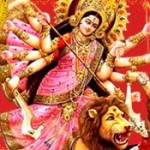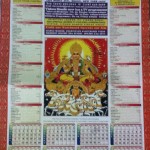I decided to divide the interview process between both my visits. During which I ask Priest Vishnu Sukul, how do temples differ in India? Did you and the community change things to conform to American society? What are things that never change? How does one become a Priest? Why did you decide to build the Mandir? Well, the Priest said he built the Mandir due to communal needs. The community assisted in building it. He said that the temples differed in size and appearance. The temples are bigger in India. His statements were made obvious by the videos shown in class. He said that the community did not change to conform to the American society, but rather, changes were made in the celebration of festivals. The manner in which Holi is celebrated is a good example. He said that darshan, bhakti, arti, prasad, and dharma are concepts that remain the same. The rituals performed to bring a new deity into the Mandir are also the same. The breath and the stare of the deity are invited into the object representing the deity. The way these are believed does not change. To become a Priest, once most go through training. After which, the status of Priest is inherited by sons. His son will be the next Priest at the Vishnu Mandir. No photos were allowed within the Mandir.
Holi
I visited the Vishnu Mandir on March 20th. On this day, the Mandir celebrated Holi which is the celebration of the beginning of Spring. They had Satsang very similar to the one they had during my first visit. Priest Vishnu Sukul spoke of the way it is celebrated in India and in Guyana. He referred to it as the festival of colors. He told stories of devotees being free and splashing one another with colors. However, the way it is celebrated at the Mandir is very different. It is more reserved. The event was founded by Priest Vishnu Sukul in order to celebrate the beginning of Spring. After the Satsang we had mahaprasad; vegetarian food was served to all in attendance. Below is a photo of what the festival of Holi looks like in India.
To get details of what takes place during a Satsang, refer to my first blog. I will attempt to take photos of the interior during my next visit. During my next visit, I will interview Priest Vishnu Sukul.
My First Visit to the Vishnu Mandir
- Vishnu Mandir (exterior view)
- Devi Maa Durga
- Vishnu Mandir 2011 Calendar
The Vishnu Mandir is located at 1216 Noble Avenue in the Bronx. The Vishnu Mandir has Sunday Satsangh from 8AM to 11:30 AM. On April 4, the Mandir will host an eleven day special event: Devi Puran Yagna in celebration of Navratri. The Mandir hosts many more special events throughout the year: Shiva Raatri, Phagwah, Ram Nowmi, Nowraatri, Raksha Bandhan, Krishan Janam Ashtmi, Deepavali, Seeta Jayanti, and Hanuman Jayanti, among others. The Mandir also hosts Hindi, Music, Dance, and Ramayana classes on Sundays. Dance class is from 4PM to 5PM and Music class is from 5PM to 6PM. The class times for Hindi and the Ramayana vary. The Vishnu Mandir was established on January 21, 1996 by Vishnu Sukul and the devotees of the Bronx community. It was established to educate devotees of the ancient and very important way of life that is Hinduism. Vishnu Sukul is still the Priest at the Mandir. He immigrated to the United States in 1986 to continue promoting the Hindu religion. Sukul was born in Guyana. He is the main spiritual leader. There are two other priests: Vyaas and Krishna Sukul. According to Vishnu Sukul, priests are trained. After which, the position is hereditary.
Well, I started the day at 6AM. I did the usual and left the house by 7:30AM. On a Sunday, I should have left earlier. Thank the Deity for cabs. I arrived at the Mandir at 7:50AM and was greeted by the Priest Vishnu Sukul and one of his daughters. He was already expecting me because I had notified him of my visit on Friday afternoon. When I entered, I was immediately overwhelmed by a presence. There was a peaceful and loving presence in the midst. There was also a very particular smell; a smell similar to incense, but much sweeter and pleasant. There are many deities – both in the form of statues and frames. There are statues and frames of Rama, Krishna, Ganesh, Hanuman, Vishnu, and Durga. There is a long wooden counter on the left hand side. On that counter, there are many deities. One statue after another is lined up on that counter. Above the statues are frames of the deities: Durga in her many forms, Rama, Krishna, etc. On the right hand side are more frames. Two of them are of Krishna: one is an adolescent Krishna playing his flute and the other is Krishna accompanied by Radha. In the front of the Mandir there are many more deities. There is also a podium and three windows: two to the left and one to the right. Fruits were offered to the deities before the service. Songs of worship were played during this time. Green, yellow, and lavender floral were placed into metallic pans. In the center of a pan was a burgundy lit candle. Devotees would rotate the pan in a circular motion before the deities and before one another. In blessing one another in this manner, three possible responses would be received. The usual response was a kiss. However, some individuals would hug the person holding the pan. Others would take the pan and reciprocate the blessing in the like manner. The individuals holding the pan would then bow and touch the hem of the other person’s garment. They would then touch there own foreheads and proceed to the next individual. The service then began with worship. After songs of worship, everyone would bow. After worship, the devotees prayed to Ganesh. The Priest asked Ganesh to “remove any doubts from [their] minds.” The prayers were also in the form of song. The Priest played an instrument similar to an accordion. Many of the congregants would take turns singing as they sat amongst one another on the carpeted floor. According to Priest Vishnu Sukul, “prayer is the maintaining of dharma, not for wealth.” After the songs lectures were given. According to the Priest, “karma is ceasing to do evil to do good or ceasing to do good to do evil.” The service ended with a devotee singing songs dedicated to his children, to his in laws, and to the Mandir. Afterward, we all shared a meal. The service ended the same way it began – with a song of worship followed by the bowing of all the devotees.
Sita Ram seems to be the general greeting. People are friendly with one another. They were also very inviting toward me. Everyone seems to know one another. There doesn’t seem to be any unspoken rules. Devotees did not seem rushed. The Mandir definitely seems like a good place to meet people and hang out. This was made evident by the end of the service. No one rushed out to leave. Everyone stood by to eat and talk to one another. The congregation consists of more women than men. The ages vary. The youngest seem to be elementary school children, while the oldest range from their mid 60s to mid 70s. English and Hindi are the dominant languages. Every song – whether prayer or worship – was sung in Hindi. The devotees sung happy birthday in English to four congregants born on the 3rd of April. When the Priest addresses the congregation, he variates between Hindi and English. Priest Sukul told me that the Mandir isn’t that much different from the temples in Guyana. However, he did say that the temples in Guyana are either outdoors or more spacey. He also said that there are more windows. Other than that, the Priest said that there aren’t any differences in what is done within the temples.
Durga has four forms according to the Priest: Lakshmi, Kali, Maharhani, and Saraswati. Maa Durga was mentioned heavily throughout the service. The Gita is read on a weekly basis. However, the Ramayana is read in the weeks prior to Rama’s birth date. The Bhagavata Purana was called the “daily Bhagavata Purana” and “the word of God.”




